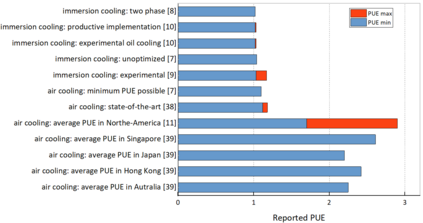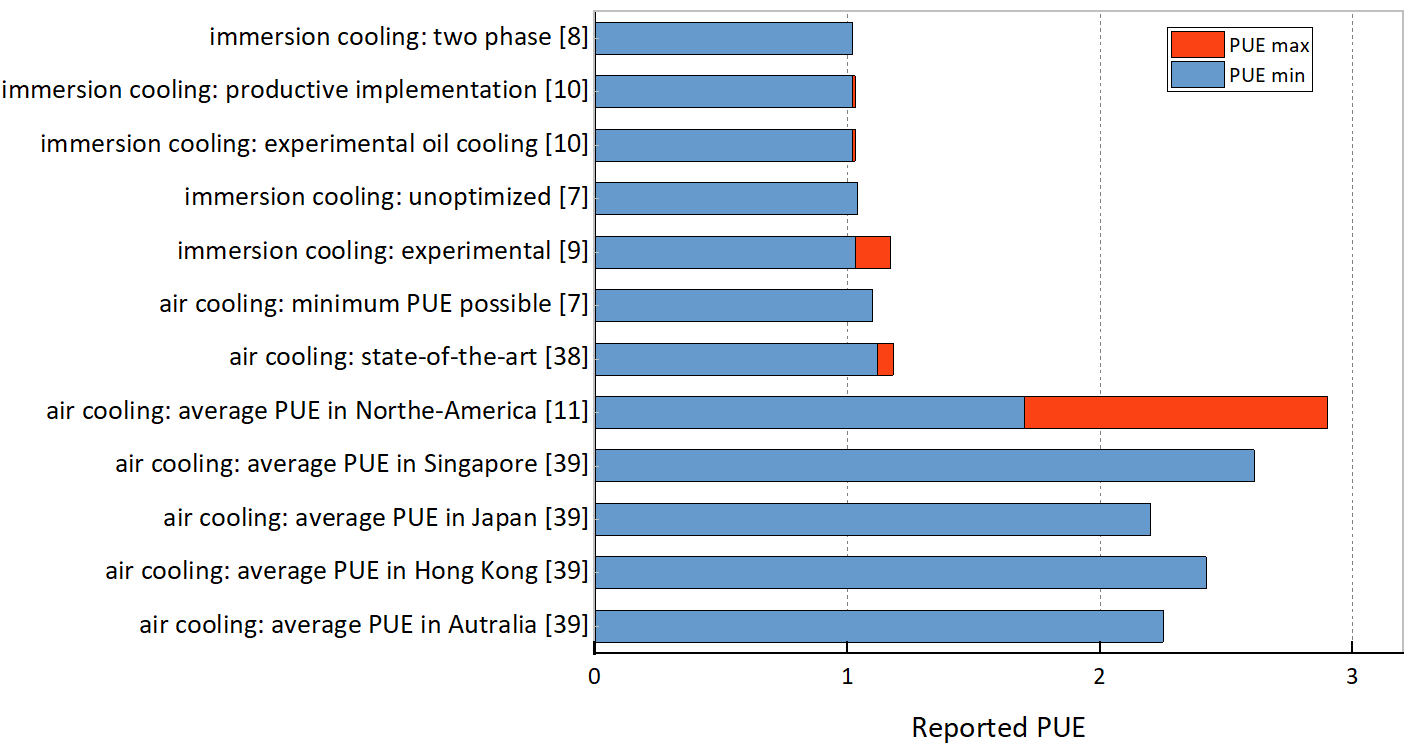Air cooling is the traditional solution to chill servers in data centers. However, the continuous increase in global data center energy consumption combined with the increase of the racks' power dissipation calls for the use of more efficient alternatives. Immersion cooling is one such alternative. In this paper, we quantitatively examine and compare air cooling and immersion cooling solutions. The examined characteristics include power usage efficiency (PUE), computing and power density, cost, and maintenance overheads. A direct comparison shows a reduction of about 50% in energy consumption and a reduction of about two-thirds of the occupied space, by using immersion cooling. In addition, the higher heat capacity of used liquids in immersion cooling compared to air allows for much higher rack power densities. Moreover, immersion cooling requires less capital and operational expenditures. However, challenging maintenance procedures together with the increased number of IT failures are the main downsides. By selecting immersion cooling, cloud providers must trade-off the decrease in energy and cost and the increase in power density with its higher maintenance and reliability concerns. Finally, we argue that retrofitting an air-cooled data center with immersion cooling will result in high costs and is generally not recommended.
翻译:冷却是数据中心冷却服务器的传统办法。然而,全球数据中心能源消耗持续增加,加上机架耗电量增加,需要使用效率更高的替代品。吸收冷却就是这样一种替代办法。在本文件中,我们量化地检查和比较空气冷却和沉淀冷却溶液。所审查的特性包括电用效率(PUE)、计算和电密度、成本和维修间接费用。直接比较表明能源消耗减少约50%,而占用空间减少约三分之二,使用浸泡冷却。此外,浸泡冷却中用过的液体的热能力高于空气,使得机架电密度高得多。此外,沉淀冷却需要较少的资本和业务支出。然而,具有挑战性的维护程序以及信息技术失灵次数的增加是主要的下坡。通过选择沉淀冷处理,云供应商必须权衡能源消耗量和成本的下降以及电密度的上升,并关切其更高的维修和可靠性。最后,我们认为,空调中心对空调机能冷却器的改装不是高额,因此建议采用高的气压。










